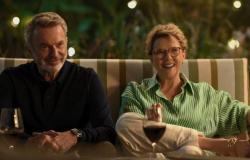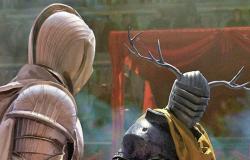If there is currently an author who perfectly combines cinephile knowledge with creative genius, it is Carlos Aguilar. To his work as a musical and seventh art scholar and researcher—from his mythical cinema guide to their pairings Cinema and Jazz, Flamenco and cinema and Flamenco Jazz. A love story (the last two in collaboration with his wife, Anita Haas), passing through his monographs around unusual celluloid figures (because they make up the type of unique and European cinema of the 60s and 70s, favorite of the author) such as Sergio Leone , Hugo Fregonese, Jesús Franco, Eugenio Martín, Julio Diamante (and his relationship with jazz and flamenco in two volumes), Mario Bava or John Phillip Law—, joins his other facet as a writer of fiction books with clearly thematic cinematographic: the thrillers The interference and Symbiosis, Co-production —twilight tribute to western Almerian—, Nine colors the moon bleeds —poetic hymn to fantaterror—or the recent One man, five bullets and The children of fury and the night —where western cinema becomes narrative, taking as protagonists respectively the legendary performers John Phillip Law (already mentioned) and James Coburn. These two books and others previously mentioned have been published thanks to the Quatermass publishing house, whose director Javier G. Romero has been able to give them an unmistakable aesthetic design, externally and internally. In the case of the last mentioned, they have an original conception, since the text is accompanied by a series of photographs of different famous interpreters of this type of cinema, from which Aguilar himself will be inspired to write and describe.
With each of these innovative books, their author has demonstrated an inexhaustible capacity to renew himself through inventiveness, proposing in each case a book different from the previous and the next. The formula used, however, is very old in good literature, as it prides itself on using existing elements to combine them and generate new and surprising ones. This is what he has done again in his new work, which he has titled double program and which consists, in turn, of two stories: Better for vultures and Scarlet Dinner in Transylvania.
Unfortunately, for more recent generations, the concepts of “double program” or “continuous session” may not sound like anything to them. At a time when movie theaters seem to disappear from cities or are entrenched in new shopping centers on the outskirts—constantly threatened by new television platforms—it seems that referring to “reruns” or “neighborhood cinemas” ” sounds like times immemorial. But those of us who have lived through them not only attest to them but also cannot avoid a certain nostalgia when remembering them.
Carlos Aguilar therefore pays an emotional and beautiful tribute to these historical formats offered by certain cinemas where, as the great film critic and screenwriter Juan Tébar – author of the original story of The residence (Chicho Ibáñez Serrador, 1969), without going any further—“in some theaters they even showed two films […]. That is, you could stay to see some more than once, or to recover what you were missing if you had caught it at the beginning.” Replicating the idea of the two previous volumes, Aguilar once again saves “some of his favorite faces, to bring them out” in these two stories. The first, once again honoring the westernwhere we will find figures such as Lee Van Cleef and Clint Eastwood, Sara Lezana, Klaus Kinski, Charles Bronson, Richard Widmark, Fernando Rey or Eli Wallach—, and the second to the European gothic horror cinema of the sixties—with the names of Christopher Lee (playing a double role as Dracula and Frankenstein’s monster), Herbert Lom, Patty Shepard and Peter Cushing. Some, framed in parchment paper so typical of “Wanted” posters; others, surrounded by Victorian frames that could easily decorate the room of a terrifying nineteenth-century setting.
Aguilar himself states: “This book […] It satisfies, therefore, an old personal illusion, by containing two stories […] through which I manage to provide my long-awaited literary contribution to the Criss Cross”—that “alloy of disparate ingredients and influences,” intelligently linking them in brotherhood under three requirements: “knowledge of the cause, creative imagination, artistic sensitivity”—. The author chooses his two favorite genres, the Western and the gothic, and he does so by bringing together in the first story the protagonists of his previous novels—John Phillip Law and James Coburn—at the same time and setting, as a preamble to the narratives in which they previously starred as sheriff and bounty hunter; in the second, inviting Baron Victor Frankenstein and his monster, Count Dracula, his servants Morpho and Ygor, the werewolf and Carmilla to participate in the story.
Aguilar writes each of these stories knowing perfectly the norms and aesthetic language with which cinema endowed its universes. Therefore, he does it from inventiveness but also from respect for the references, sifting the images from the big screen into the narrative format of the book. Thus, it is not surprising that, reading them, it is easy for us to visually transfer what is related to film images – supported, in turn, by the photographic references of the interpreters proposed to us. Literature returns to the original screen, in a perfect circle and both genres are reborn with the best of their imprints. We will ride with John and Coburn through desert landscapes until we reach Báratro, a Mexican town besieged by criminals, or we will travel with Victor Frankenstein and Morpho by carriage along the roads of Transylvania, heading to Dracula’s castle, where he has arranged for us to have a very special dinner in the night of the dead. Enjoy these cinematic readings or these literary films!






